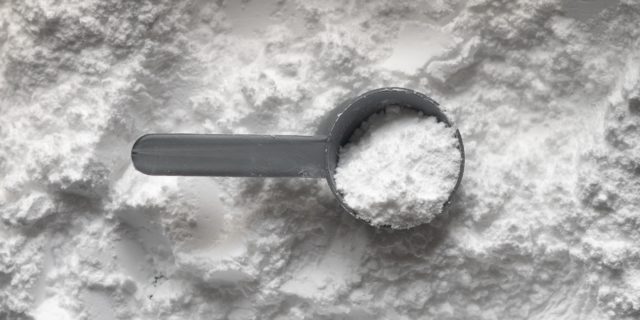
By
Scott Forbes
November 2017
Print Version
What you need to know
A common question exercise experts get is “how can I get fit quickly?” The answer is high intensity interval training (HIIT). This type of exercise training is known to improve aerobic fitness, performance, body composition, and may improve metabolic health. HIIT is very intense but is extremely time efficient. Research from McMaster University led by Drs. Gibala and Little have shown that “all out” sprinting on a bike for 30 seconds repeated four to six times achieved similar aerobic adaptations compared to 90-120 minutes of continuous moderate intensity exercise.
Why this research is important
Physical inactivity increases the risk of many adverse health conditions. Health care costs linked to physical inactivity in Canadian adults was estimated in 2009 at $6.8 billion (Janssen et al., 2012). Despite many adults being aware that physical activity can improve health and well-being, as little as 15% of adults achieve the minimum recommendations of 150 minutes of moderate to vigorous physical activity per week. The number one reason for not adopting a more physically active lifestyle is lack of time. Since HIIT is equivalent to longer duration exercise but with a fraction of the time, it is therefore a viable option. If we can further enhance HIIT with a nutritional supplement, this seems like an even better scenario.
One supplement that might improve high intensity exercise is creatine. We have previously shown that creatine supplementation with resistance training led to greater gains in muscle mass and strength compared to resistance training alone (Candow et al., 2014). But how does creatine work? The body has several pathways to produce energy. The fastest energy system involves the breakdown of phosphocreatine. Creatine supplementation increases phosphocreatine stored in the muscle, thereby enhancing the capacity of this energy system. In theory, creatine supplementation would allow an individual to train harder.
How the research was conducted
We used a randomized placebo-controlled, double-blind, experimental design. Seventeen females (age = 23 ± 4 years) were randomly assigned to either the creatine group or a placebo group. Both groups did HIIT 3 times a week for four weeks. Each week, participants completed three different types of high intensity interval training: (i) 30-seconds “all out” repeats with four minutes’ recovery (4-6 repeats); (ii) 6-second sprint repeats with 24 seconds rest (10-24 repeats); and (iii) 60-second sprints with 60 seconds of recovery (8-12 repeats). Before and after the four weeks of training each participant completed an exercise test to determine aerobic fitness, a 2000 meter cycling time trial, and a dual energy x-ray absorptiometry (DXA) scan to assess body composition.
What the researcher found
HIIT, as expected, improved aerobic fitness (creatine group = +10.2%; Placebo = +8.8%) and time-trial performance (creatine group = -11.5%; placebo group = -11.6%) over the four weeks, however, there were no differences between groups. This indicates that creatine supplementation did not further enhance the aerobic adaptations. With regards to body composition changes over time, there was no change for fat mass (Cr = -0.3%; PLA = +4.3%) and muscle mass (Cr = +0.5%; PLA = -0.9%) over time or between groups. However, the results were trending positively for the creatine group.
How this research can be used
First, we confirmed that HIIT is an effective and time-efficient exercise strategy. This is extremely important since low aerobic fitness has been linked to cardiovascular disease and all-cause mortality. Future research is required to determine the feasibility of HIIT training to enhance health in a variety of populations. Second, creatine had no further benefit. One limitation is that HIIT is so potent and effective, while creatine supplementation (like most supplements!) has such a small effect. To quote a co-author and collaborator, Dr. Jonathan Little from UBC-Okanagan, “to detect a pin prick (i.e., creatine) when someone is using a sledge hammer (i.e., high intensity interval training) is very difficult”. Despite no further benefit of adding creatine to this type of exercise, future research combining nutritional and exercise interventions are crucial to helping us understand how to maximize exercise adaptations, performance, and health.
Acknowledgements
Dr. Forbes would like to acknowledge the collaboration of Dr. Little from UBC-Okanagan and Dr. Candow from the University of Regina, as well as their graduate students involved in this project.
About the Researcher
Keywords
- creatine
- exercise
- health
- performance
- supplements
Publications Based on the Research
Forbes, S. C., Sletten, N., Durrer, C., Myette-Cote, E., Candow, D., Little, J. P. (2016). Creatine monohydrate supplementation does not augment fitness, performance, or body composition adaptations in response to four weeks of high-intensity interval training in young females. International Journal of Sport Nutrition and Exercise Metabolism, 27(3), 285-292.
Editor: Christiane Ramsey
Read more BU Research
Research at Brandon University follows comprehensive policies designed to safeguard ethics, to ensure academic integrity, to protect human and animal welfare and to prevent conflicts of interest.

